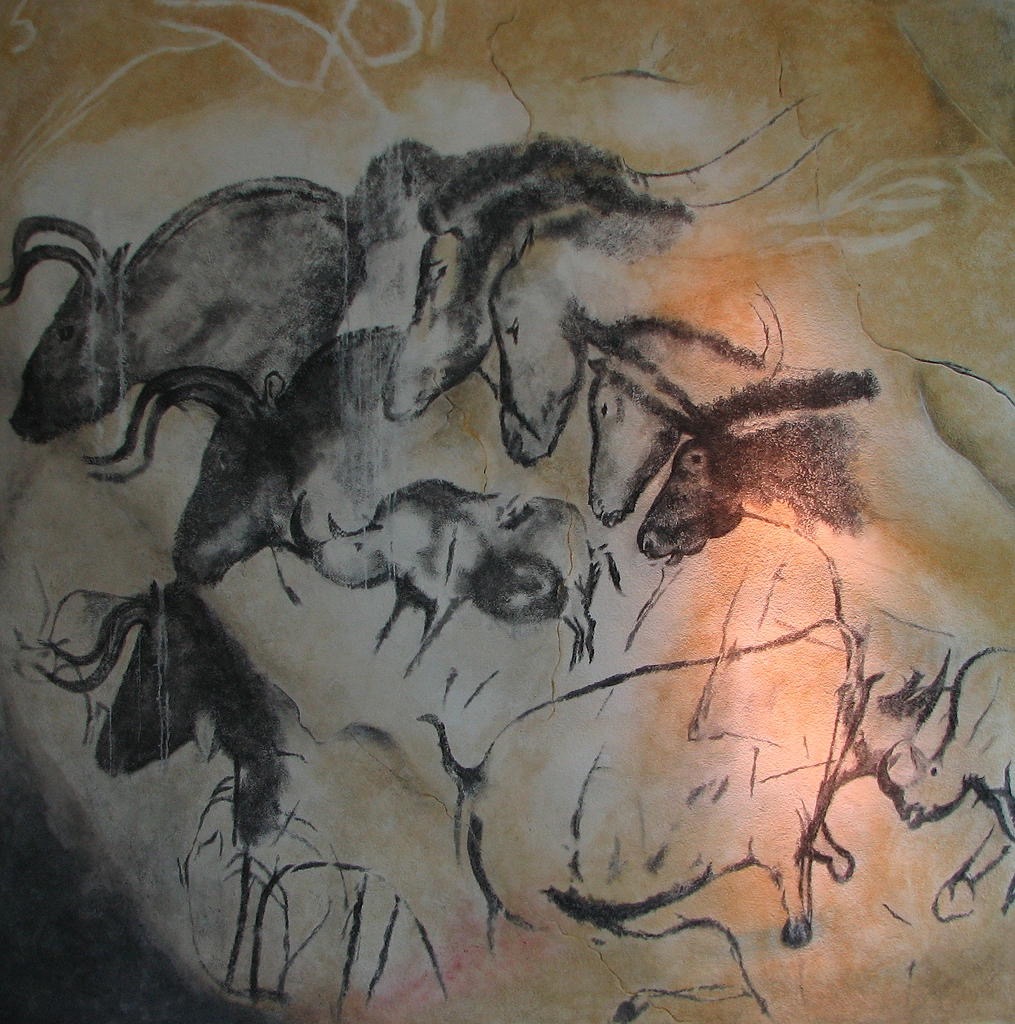SecondOrderStorytelling

Unknown: Replica of paintings in the Chauvet Cave (Aurignacian Era—32,000 to 30,000 years ago)
"Authoring's also like this."
As I finished reading another draft manuscript, having proofed and corrected it, and for the very first time experienced it as a complete work, I remembered what came next. Now that I'd told the story, I would be called upon to tell the story about the story, to commence with a period of SecondOrderStorytelling. If writing a book's challenging, and, believe me, it is, writing the book about the book proves even more difficult for this humble and often humbled scribbler. I imagine a promoter of the ancient artists who created the work found in France's Chauvet Cave directing those artists to explain their work, pointing out that future generations, to whom the work would inevitably belong, might struggle to understand the purpose and significance of the artwork without a crib sheet interpreting it for them. The artists, skilled in the visual arts, might well have struggled to satisfy this perfectly reasonable request, them not possessing a written language yet and all. The same fate befalls the modern writer aspiring to authorhood, for he, too, feels as though he lacks a written language adequate to explain what he readily admits might prove difficult to sell if he cannot find a way to tell the essence of his story without forcing his potential audience to actually read the manuscript and draw their own conclusions. He's called to explain himself. ©2022 by David A. Schmaltz - all rights reserved
I can imagine Melville mumbling that his book's about a whale. "No, no, it's about a sea captain. Well, on the other hand, it's really, at a deeper level, about obsession. Or should I say it's about passion? Say, what does the public prefer today, nature stories, sea adventures, or psychological thrillers? Does it even matter?" Of course it matters, for the story about the story might well be most readers' first introduction to the story and the writer, so the SecondOrderStorytelling might matter more than does the first order one it seeks to describe. The author knows, and certainly knows well, that the work might well be interpreted in ten thousand different ways, for he intended this to be, and only having experienced the work from his own perspective, he hasn't even begun to imagine the many orthogonal ways readers might interpret it. He's just called to choose one, of course the best one, that briefly and simply explains the fundamentally inexplicable. Simple.
And the publisher will most certainly treat the author as if he was simple if he cannot produce that simple second-order reduction of his otherwise infinitely various masterpiece, an elevator speech. Back to the painters in Chauvet, who worked exclusively in allegory. They might say that they're telling the typical love story of the time, a real bodice-ripper, told through the pictorial images of wild game. What better allegory, they reason, since both passion and wild game hunting feature hot blood? To their minds, the connection's obvious. They see their artwork as slightly pornographic graffiti, hardly the stuff that their progeny might one day study in university archeology departments, but more back alley Friday night sort of stuff. Their promoter, their publisher, might counsel tham that there's really not much of a market for back alley porn in that day's market and so discourage them from attempting to preserve the stuff, it being common as flies on shit.
I ask others to read my manuscripts and to share their story of reading my stories, eliciting some second-order feedback. I'm usually left to wonder what book they read, since they seem to experience something I hadn't actually written, or hadn't realize that I had. "What book did you read?" I'm always moved to ask, for it seems undeniable that every reader most certainly reads a different book than every other reader ever does. The SecondOrderStorytelling notwithstanding, there is no second order story that properly encapsulates the stories told within, there's just a second order fiction that tells a story as if there might have been such a story imbedded within it. Hemingway wrote about neither old men nor the sea, and not about big fishes, either, but about the human condition. His characters were mere actors representing something other and much more than simply themselves, but, of course, it's hard to produce cover art without the notion that the contents are actually about an old man, the sea, and fish. Authoring's also like this.


